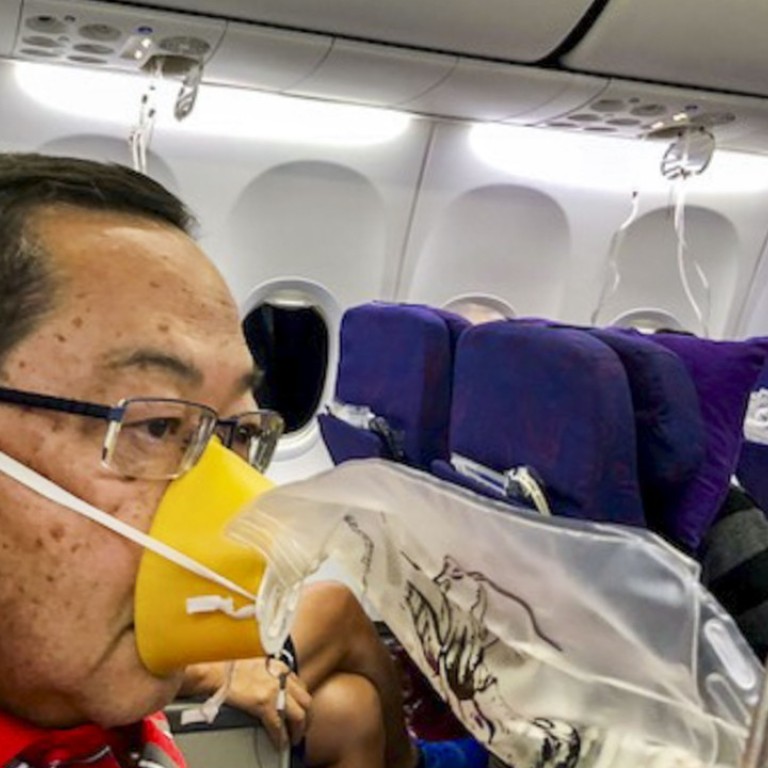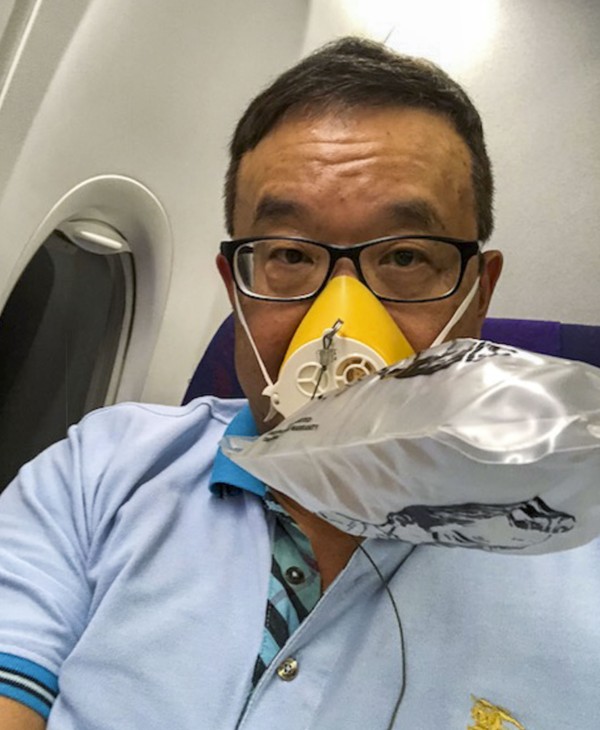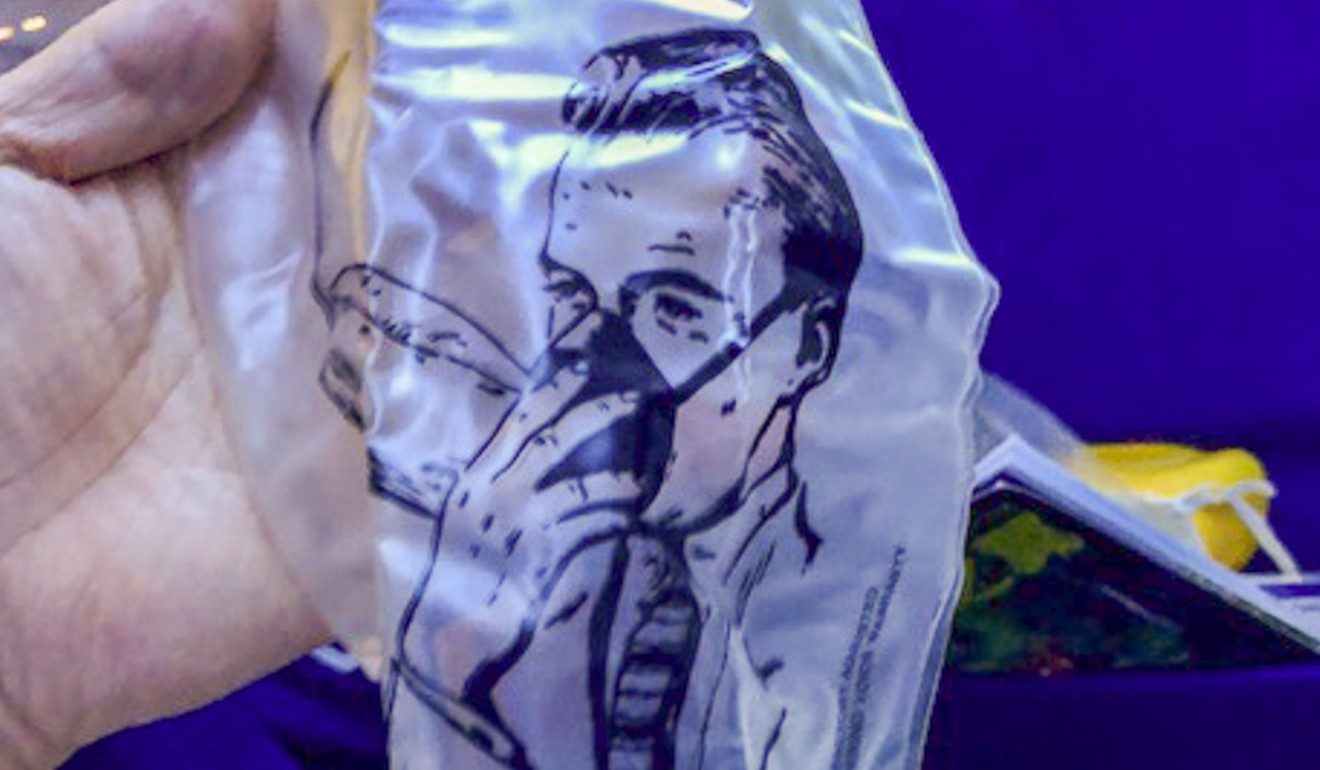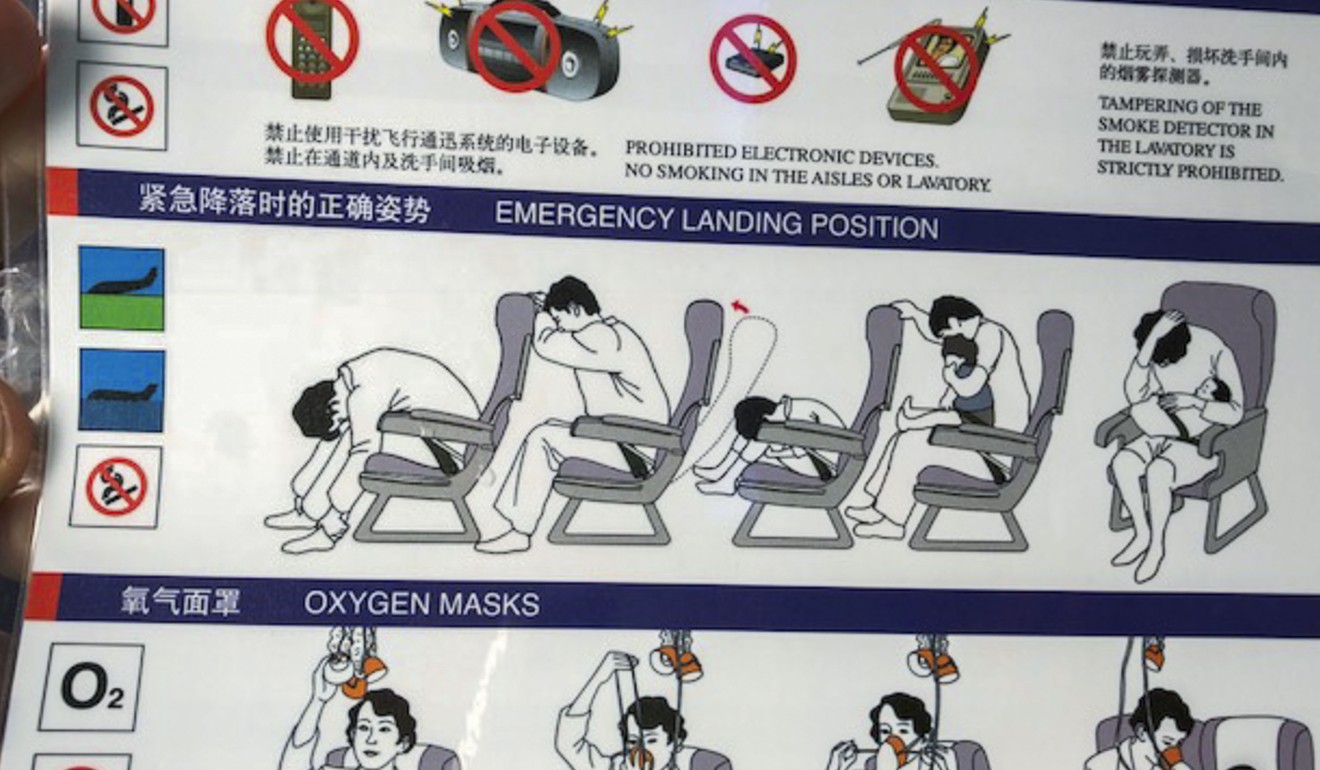
Exclusive | Passengers on Air China flight that plummeted 25,000 feet reveal horror of ordeal, including fearing there was no oxygen in masks that dropped from ceiling
Air China had earlier admitted pilot was smoking e-cigarette in cockpit and mistakenly switched off air conditioning system triggering release of oxygen masks
Thirty minutes after Eugene Chow’s Air China flight took off from Hong Kong for Dalian on July 10, the lawyer found himself struggling with the oxygen mask that fell from the cabin ceiling as the plane began a rapid descent.
Chow said panicky cabin crew were dashing about as an automated emergency announcement told everyone to belt up and pull their oxygen masks over their mouths and noses.
But to the 66-year-old’s horror, it felt like no oxygen was coming through the tubing to his mask.
“I kept breathing in and out so much that my mask filled up with carbon dioxide from my exhalation instead,” said Chow, who was on a golfing trip with eight friends, all seated in business class.
“None of the oxygen masks which were deployed had any oxygen coming out of the masks,” he said. Everyone in his group felt like they were struggling to breathe.

Chow, who is married with three children, contacted the Post to say he suspected the oxygen masks failed and should be checked. The Post checked the pictures he provided and they appeared authentic but his claims could not be confirmed by Air China as they did not respond to a request for comment.
Other passengers the Post spoke to said they either felt there was “no air” or “very little oxygen” coming through their masks.
Flight CA106 to Dalian in northern Liaoning province plunged 25,000 feet (7,620 metres) in 10 minutes between Shantou and Xiamen. The Boeing 737 aircraft then climbed back up from about 10,000 feet and continued to Dalian, landing safely with 153 passengers and nine crew. The flight takes about three hours.

Air China pledged to rectify “weak links” and improve its safety management system.
Chow told the Post that if the national carrier was “interested in improving safety measures” it should check the oxygen masks on the aircraft.
His golfing buddy, 67-year-old retiree Winston Tsang Chuen-on, was in the seat next to him and also struggling to breathe.
“There wasn’t really much air inside, no oxygen flowing. It was strange. So we pulled off [the mask] and breathed the cabin air,” Tsang said, adding that he wondered if it was “game over” for him.
Over in the economy section, Hoby Sun, 37, a cellphone photographer from Dalian, said he “froze and started shaking” when he had to put on his oxygen mask.

He was too scared to tell if it was working properly but when he posted on social media photos he took during the incident, friends and netizens commented that his mask did not look like it had oxygen flowing as it was not inflated.
“It made me question if the mask was functioning,” he said, adding that no one in the seats around him seemed to think there was anything wrong with the masks.
It made me question if the mask was functioning
Oxygen masks provide passengers emergency air supplies at high altitudes when cabin pressure drops, to prevent the onset of hypoxia, when the body does not have enough oxygen to maintain a conscious state normally.
In other similar air emergencies, distressed passengers did not follow the instruction to cover their mouths and noses with their masks, and felt there was insufficient or no oxygen flow. Chow and the others the Post spoke to insisted that they wore their masks correctly.
A Cathay Pacific engineer, who declined to be named, said the clear bags attached to oxygen masks don’t necessarily inflate even when air is flowing.
Commenting on the passengers’ allegations, he said: “It’s very difficult to think that several of them could have failed. If it did, perhaps Air China was not up to date with their inspection schedule or replacements.

“It could happen but [it is] rare. In the panic maybe they didn’t realise oxygen was flowing.”
Air China and the Civil Aviation Administration of China did not respond to questions about the aircraft’s masks, their maintenance or whether the passengers’ claims would be investigated.
There wasn’t much air inside, no oxygen ... we pulled off [the mask] and breathed cabin air
The July 10 incident has also highlighted the issue of pilots who smoke in the cockpit despite the ban on all Air China flights, including smoking e-cigarettes.
A former Air China pilot, who flew for the airline for five years until recently, provided almost 70 photos showing multiple instances of Air China pilots freely smoking in the cockpit. He took the photos himself.
He said he did not smoke in the cockpit himself, but smoking was part of the cockpit culture and “as part of the crew I blindly obeyed the culture”.
The pilot, who declined to be named, said the smoking culture bothered him but he did not do anything about it until now.
“It has been on my chest for many years [but] now I feel I have done my moral duty,” he said. “I do not think a single event could stop the smoking culture but at least I am choosing the right side this time.”
Meanwhile, some passengers on Flight CA106 remain unhappy about the way the airline has treated them after their ordeal.

When rumours swirled that the incident was caused by a pilot who was smoking, a group of infuriated passengers on the flight formed a WeChat group, and three filed complaints to Air China.
In the panic maybe they didn’t realise oxygen was actually flowing
Sun said the airline called him last Friday, July 13, a day after Air China revealed that its pilot had been smoking. “The staff simply apologised for what happened, and said that they can send us aircraft models as souvenirs,” he said.
“This really p***ed us off.”
He felt the airline ought to do more to acknowledge the impact on passengers.
“More than a hundred people on the plane, we are just a number to them. No one mentions us or really cares about how we are doing now,” he said.
“I thought I was going to die,” Sun recalled.

